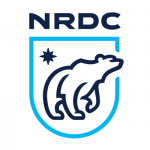Wisconsin Residents Among the 127 Million Americans Living in “Double Whammy” Hot Spots Where Smog and Ragweed Most Threaten Health
NRDC mapping project shows how hotter climate and CO2 can have severe air quality impacts in AZ, CT, CO, DC, DE, IL, IN, MA, MI, MO, NH, NY, OH, PA, RI, UT, VA & WI
WASHINGTON, D.C. (July 11, 2017) – Wisconsin residents are among the four in 10 Americans living in “double whammy” areas and counties where unhealthy smog and pollen-producing ragweed – both tied to the growing climate crisis – combine to threaten respiratory health, a Natural Resources Defense Council mapping analysis released today shows.
NRDC’s analysis found air quality “hot spots” in states and areas with the greatest percentages of people living in areas with both ragweed and unhealthy ozone days. Ironically, Washington, D.C., — where climate action is being rolled back — leads the rankings followed by Connecticut, Rhode Island, Illinois and Pennsylvania.
127 million Americans live in zones where increased carbon dioxide and ozone smog pollution largely from burning fossil fuels, combined with more ragweed pollen, can worsen respiratory allergies and asthma. That can lead to more sick days, higher medical costs, and a rise in the number of heart problems and premature deaths each year.
For Wisconsin, the analysis shows:
* The state ranks 11th in percentage of people living in counties with ragweed and unhealthy smog days.
* 56 percent of residents live in counties reported to have ragweed and unhealthy smog days.
* In Wisconsin, 16 counties have reported an average of one or more unhealthy smog days each year, 68 counties have reported the presence of pollen-producing ragweed, and 16 counties suffer from both.
* This double whammy of air quality threats is particularly dangerous for the estimated 95,000 children and 427,000 adults with asthma.
* Making the air cleaner by reducing carbon pollution from power plants, vehicles and other polluters could avoid more than $618 million in health costs in 2020.
“It’s alarming: Today 127 million Americans, including many Wisconsin residents, live in zones of pollen-producing ragweed and ozone pollution that can threaten our next breath,” said Kim Knowlton, senior scientist at the Natural Resources Defense Council, who oversaw the mapping project. “This double-whammy health threat will just get worse if we don’t curb climate change soon. And it’s Exhibit A for why protecting our public health in the face of climate change is so important, not taking dangerous steps to unravel historic climate action.”
Other states that have been at the forefront of climate and clean energy action and are impacted include Colorado, Missouri, Montana, Nevada, New York, Virginia and Wisconsin.
Because climate change is one of the most serious global health threats, NRDC undertook the mapping project to show—by state, county and address – how climate change is affecting air pollution and public health on the local level.
The climate health project also highlights how local solutions can make the air safer and what state governments are and should be doing to curb climate-change fueled dirtier air, while the Trump administration moves to unravel national leadership on addressing climate change.
For Wisconsin, the analysis highlights: “Heat-trapping carbon pollution from Wisconsin’s energy use declined 8.8 percent from 2005 to 2014, in part due to the state’s efforts to increase clean energy and make buildings more efficient. However, climate change already threatens the health11 of Wisconsin residents. The state does not have a climate adaptation plan to prepare for the health impacts of dirtier air but is developing one.”
Climate change is the central environmental challenge of our time. Carbon pollution from power plants and vehicles, and other greenhouse gases are contributing to hotter global temperatures, sea level rise and more extreme weather.
Sixteen of the 17 warmest years globally since recordkeeping began in the 1880s have occurred since 2001, according to NASA and the National Oceanic and Atmospheric Administration.
Rising temperatures and carbon pollution worsen smog and ragweed. Higher temperatures speed up the formation of smog. And rising carbon dioxide levels enhance the growth of ragweed and other pollen producing plants and as warm seasons get longer, higher pollen concentrations will be produced over a longer period each year.
Climate change will increase the number of bad air days across much of the United States. This puts millions of Americans at risk for irritated eyes, noses, and lungs, but it’s particularly dangerous for young children, older adults, people who work or exercise outside, and our country’s more than 24 million asthma sufferers.
NRDC recommends steps individuals and others can take to head off a climate-propelled public health crisis, including:
* Calling on companies and decision makers at all levels of government to help reduce smog-forming pollution and carbon pollution from power plants, vehicles, and other sources.
* Demanding that our federal, state, and local governments prepare for the health threats of climate change. Today, less than one-third of U.S. states have developed a plan to address the health impacts of climate change.
* Calling for implementing climate policies such as the Clean Power Plan to clean up dirty power plants.
NRDC’s climate health maps and data are here: https://www.nrdc.org/climate-change-and-health-air-quality
A blog by Kim Knowlton on the mapping project is here: https://www.nrdc.org/experts/kim-knowlton/climate-change-still-threatens-air-quality-and-your-health
A blog on the project’s findings by Juanita Constible, special projects director in NRDC’s Climate & Clean Air program, here: https://www.nrdc.org/experts/juanita-constible/when-we-punch-mother-nature-she-punches-back
NRDC prepared a Frequently Asked Questions and responses document here: https://www.nrdc.org/resources/climate-change-and-health-air-quality-faqs
NRDC story: In Philadelphia, Climate Change Can Take Your Breath Away: https://www.nrdc.org/stories/philadelphia-climate-change-can-take-your-breath-away
A personal story: “Climate Change Is In the Air” and what you can do to help clean up the air, is here: https://www.nrdc.org/stories/climate-change-air
The Natural Resources Defense Council (NRDC) is an international nonprofit environmental organization with more than 2 million members and online activists. Since 1970, our lawyers, scientists, and other environmental specialists have worked to protect the world’s natural resources, public health, and the environment. NRDC has offices in New York City, Washington, D.C., Los Angeles, San Francisco, Chicago, Bozeman, MT, and Beijing. Visit us at www.nrdc.org and follow us on Twitter @NRDC.
NOTE: This press release was submitted to Urban Milwaukee and was not written by an Urban Milwaukee writer. While it is believed to be reliable, Urban Milwaukee does not guarantee its accuracy or completeness.





















